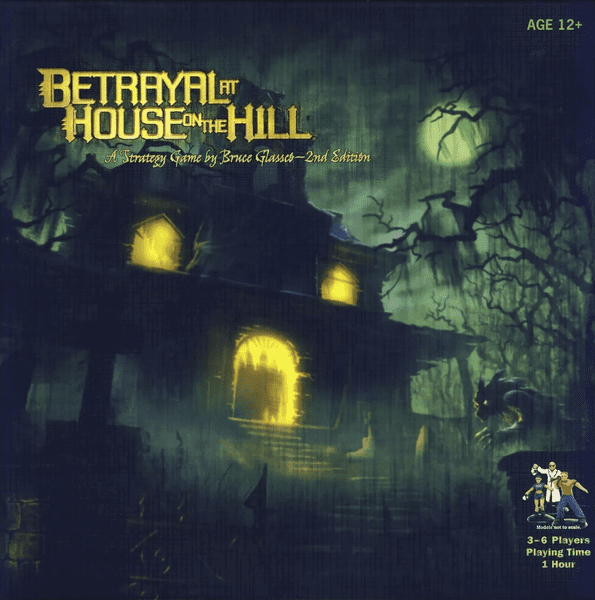Betrayal at House on the Hill (2004) Board Game
Betrayal at House on the Hill is a board game that was first released in in 2004. It was designed by Bruce Glassco and published by Avalon Hill. The game falls under the categories of adventure, exploration, horror, and miniatures, and it is recommended for players aged 12 and above. With its unique blend of mechanics and thematic elements, Betrayal at House on the Hill has gained a dedicated following over the years.
Game Components of Betrayal at House on the Hill
How To Setup Betrayal at House on the Hill
To set up the game, each player selects a character and sets their skill indicators to the starting values. The house begins with the ground and upper floors connected by a staircase, while the basement remains unconnected until certain actions allow a connection. Players place the starting tiles on the board, and each player chooses their starting room. The Event, Item, and Omen decks are shuffled and placed within reach. The Traitor’s Tome and Survival Guide books are also prepared but remain unopened until the Haunt phase begins.
Gameplay Mechanics and Game Objective
Player Experience
Playing **Betrayal at House on the Hill** is a highly variable and immersive experience. The game thrives on unpredictability, with each session offering a different layout of the house and a unique Haunt scenario. Players must balance exploration with caution, as the discovery of Omens can trigger the Haunt phase at any moment. The game is particularly enjoyable with a group that embraces the narrative and role-playing aspects, often leading to humorous and memorable stories.
Pros
Cons
Personal Thoughts on Betrayal at House on the Hill
**Betrayal at House on the Hill** is ideal for groups looking for a narrative-driven, horror-themed experience. It is best enjoyed with a mindset focused on storytelling and fun rather than strict competition. The game suits horror enthusiasts and those who appreciate the unpredictability and social interaction it offers. However, it may not be the best fit for players seeking highly balanced or Euro-style games, as it relies heavily on random elements and dynamic scenarios. For the right group, it can be an absolute blast, akin to a live-action Scooby-Doo episode, but for others, it might feel chaotic and frustrating.
We are supported by our audience. When you purchase through links on our site, we may earn an affiliate commission, at no extra cost for you. Learn more.

